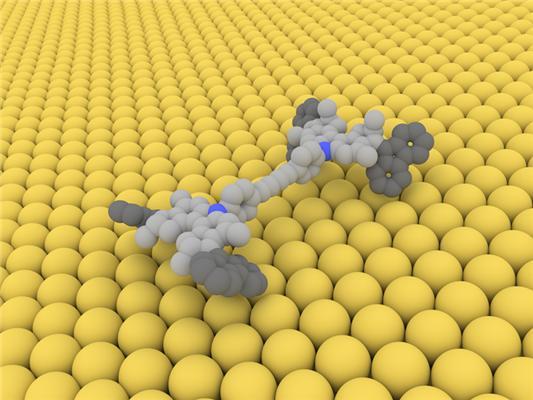Please note: Osher Rainforest will be closed for maintenance Jan. 14–16.
Science News
The Nano Car
November 14, 2011

Last week, Nature reported the invention of the smallest car ever. The nano car, developed by scientists in Switzerland and the Netherlands, consists of only one molecule, is emissions-free and has four-wheel drive.
The mini-mini vehicle measures approximately 4x2 nanometers—about one billion times smaller than a VW Golf. It’s powered by electrons, delivered to the car via the tip of a scanning tunneling microscope (STM).
Researchers configured the “car” as a core with two hubs, with each hub flanked by two paddles—the wheels of the nano car. Electrons make the wheels rotate, New Scientist explains.
…the wheels experience overcrowding against the body of the nanocar and will move to a more spacious position as soon as possible. They get this opportunity when the bonds holding the wheels to the body stretch, prompting the wheels to move another quarter turn in the same direction, to a more “comfortable” position. A further pulse of electrons repeats the process.
In this fashion, the researchers were able to make the one-molecule car (it’s mostly carbon, with small amounts of nitrogen and sulfur) move over a conductive surface (copper in this experiment) in a relatively straight line. It moved about six nanometers with ten electrons as fuel. That’s not very far: the head of a pin has a diameter of about a million nanometers, or about 170,000 six-nanometer trips.
And the car has a few flaws, as well. The wheels can only turn in one direction, and in best cases, they turn in the same direction. ScienceNOW mentions that “The only difficulty is that lots of the cars don’t actually work because when deposited on a copper surface they land on their roofs or sides.” And Ars Technica reports that
…there are some instances where one or more of the wheels doesn’t actually turn. That can cause the molecule to move a shorter distance or even veer off to the side.
Still, researchers are hailing the nano car as a great achievement. A number of chemists aim to use similar principles and concepts to design molecular transport machines, which could then carry out specific tasks on the nano scale. The movement can also help us better understand why “tiny motors in nature, such as the motor proteins that move material around in cells, are so highly efficient,” according to New Scientist.
Image courtesy of Empa